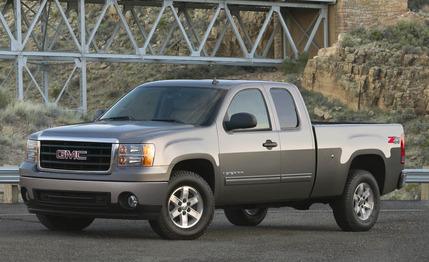
 Short Take Road Test
Short Take Road Test
Nissan execs admit that, in the wake of the company’s merger with Renault, the Maxima was given second billing to the Altima when it came time for their respective redesigns—especially after the current Altima debuted in 2007 wearing hand-me-down duds from its big brother. The two cars were nearly indistinguishable, and the Altima’s optional 270-hp V-6 meant it was more powerful than the flagship Maxima.
The 2009 Maxima changes that. The eye-catching shape, with its liquid-like flow, will be mistaken for nothing in the Nissan stable but does share many cues with the current Infiniti design philosophy, particularly that of the recently introduced 2009 FX. And the power issue is resolved with a bump of 20 horsepower over the Altima’s optional V-6, endowing the Maxima with 290.
Sporty starts with size, and the 2009 Maxima reverses the trend toward bigger and heavier by shedding inches in nearly every critical dimension. Length is down almost four inches, wheelbase has been cut by two, and the roof is a half-inch lower. Width is up 1.5 inches, however, for a sportier stance. If back-seat passengers miss those longitudinal inches, at least they now have extra space to splay their knees. Unless Maxima passengers are circus-sized, however, they shouldn’t have any complaints. Seats front and rear are comfortable and firmly bolstered, with the rear seats perhaps more comfortable and snug than the fronts.
More Power + Less Weight = Hi-Ho!
As a result of the downsizing, the new Maxima weighs in right on top of the old model—3669 pounds for our tester. More power and less weight conspire to cut the Maxima’s 0-to-60-mph acceleration time to 5.8 seconds from 6.1; and the sedan now clocks 14.5 seconds at 98 mph in the quarter-mile. An important part of those numbers is the Maxima’s next-generation CVT, which zings the engine to its power peak and allows it to stay there while the speedo twirls toward the high end—good for performance numbers, not so good for aural enjoyment.
What we would usually call top-gear acceleration—if it weren’t technically inaccurate to call it that when a CVT is involved, as there are no real “gears”—is quite impressive: 30-to-50 and 50-to-70 mph take just 3.2 and 3.6 seconds, respectively. Passing on a two-lane is a quick and stress-free affair, and the power and response of the CVT are fun and addicting. For a vehicle routing 290 horsepower through the front wheels, there is surprisingly little torque steer. A gentle tug to the right is easily controlled by a single finger; with two hands firmly on the wheel, the driver will not notice.
For those gleeful moments when speed limits fade from worry and maximum lateral load becomes mission critical, the CVT can play manual transmission, with paddles selecting from six preprogrammed ratios, the right paddle pulling higher gears and the left dropping down for tight carousels. Beautifully shaped and rendered in a rich-looking faux aluminum, the shift paddles are mounted to the steering column instead of the wheel, so the driver always knows where they are through the most serpentine stretches. They summon immediate responses from the transmission, although some of our crew thought they lacked the positive feel of, say, Mercedes-Benz’s paddle shifters.